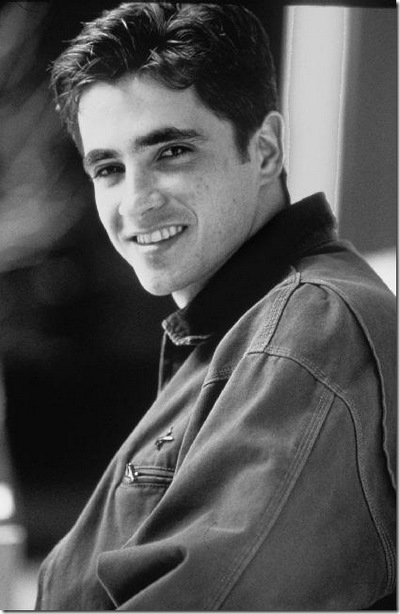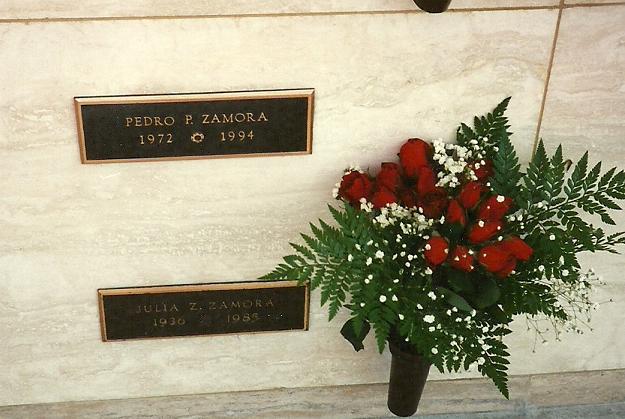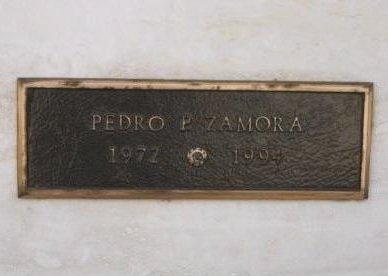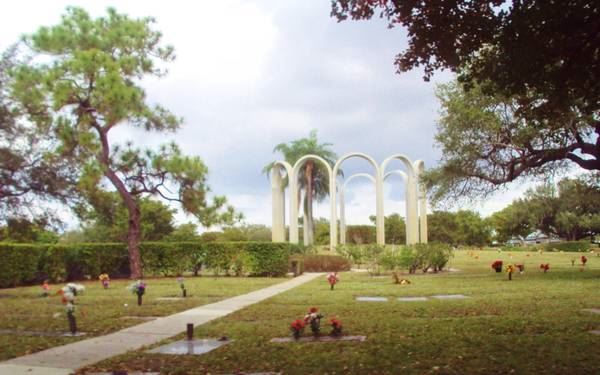Pedro Zamora (Pedro Zamora)

Pedro Zamora was born in Diezmero, San Miguel del Padrón, on the outskirts of Havana, Cuba, to Hector Zamora, a food-warehouse worker, and Zoraida Diaz, a housewife. Zamora was the eighth and youngest child in his family. After the birth of their seventh child, Zoraida had been told that she would not be able to have another, so when Zamora was born feet first on February 29, 1972, the leap day of a leap year, he was regarded as charmed and treated specially by those in his community. Hector had fought in the Cuban Revolution for Fidel Castro, but became disillusioned with the changes after Castro came to power and revealed himself as a communist. According to Pedro, any mention of Castro in their home would result in a tirade from Hector, for which he earned a reputation with local informants, who as a result, made life difficult for the family. The Zamoras lived in a small house with a dirt floor. Food was scarce and Zoraida would trade on the black market for food.
In 1980, the Zamoras left Cuba for the United States during the Mariel Boat Lift, when Pedro was eight. After five days of processing, the entire family was set to board for the U.S. on May 30, 1980, when, mere hours before they did so, government officials ruled that his four older brothers were too close to the draft age and had to remain, while his oldest sister, a communist official, stayed by choice. The elder siblings insisted, over their parents’ wishes, that they go without them so that the younger ones would have a better life. Pedro’s parents took him, his sister Mily, and his brother Jesus onto a boat filled with 250 people that had been built for half that number. The Zamoras resided for most of his life in Hialeah, Florida, a suburb of Miami. As a result of the difficulty of the family’s continued separation, Pedro became very close to his mother.
Zoraida died of skin cancer when Pedro was 13, after which Mily, who was eight years older, helped raise him. Zamora, suppressing his grief, went into denial by throwing himself into his schoolwork and by having promiscuous sex, having realized soon after Zoraida’s death that he was gay. Zamora was an honors student, president of the Science Club, captain of the Cross-Country team, and as one of the most popular students in Hialeah High School, was voted Most Intellectual and Most All-Around. His mother’s death inspired him to become a doctor, but he replaced her presence in his life by becoming sexually active with many sexual partners. He was ignorant of safe sex, as the only AIDS education he received was in the seventh grade from a man who did not present the disease as a legitimate threat to him, but as something distant that only afflicted societal undesirables like prostitutes and drug addicts. Things such as sex and condoms were never mentioned and so Zamora never identified himself as someone at risk. When he was fourteen, his father, suspecting his son was gay, had his brother follow him when he was supposed to be going out with a group of friends, only to find Zamora with his boyfriend. Zamora admitted his sexual orientation when his father confronted him. Hector, rather than being upset, was concerned over the homophobia to which his son might be subjected, but affirmed that he would be supportive of his son.
In late 1989, while in his junior year of high school, 17-year-old Zamora donated blood during a Red Cross blood drive, and received a letter a month and a half later saying that his blood tested “reactive”, though it did not specify for what, as the general screening was for a variety of viruses and infections. Zamora initially denied his suspicions, but weeks later, he decided to be tested, and on November 9, 1989, the results confirmed that he had HIV.
His family was devastated at the news, though supportive. Zamora decided to redouble his efforts to graduate from high school before he died, though he did not give much thought to his health, as he was still in denial. He graduated high school in 1990, a year early. Five months later, he suffered a severe case of shingles that covered the entire right side of his body and face. With medication, the condition subsided after two months, but it inspired Zamora to join a Miami-based HIV/AIDS resource center called Body Positive, where he met others with HIV and AIDS, and educated himself about the disease, and on how to lead a positive life with it. Soon thereafter, he came to talk about his condition to others to attempt to raise awareness about the disease in his community.
Pedro enrolled at Miami Dade College and decided to make a career as an AIDS educator. He began to lecture at schools of all levels, PTA meetings, churches, and anyone else who would listen, traveling the country, sitting on the boards of various AIDS organizations, and hoping to use what time he had left to prevent others from sharing his fate. In five years, he spoke publicly hundreds of times, attended an international AIDS conference, and accepted a position on the board of a charitable trust endowed by insurance companies (although he had no insurance himself), through which he came to the attention of the media. The constant travel took its toll on Zamora, who at times was so tired that he was forced to cancel speaking engagements.
At the age of 19, his work came into national focus when Eric Morganthaler wrote a front page article about him for the Wall Street Journal, resulting in talk show interviews by Geraldo Rivera, Phil Donahue and Oprah Winfrey. Though Zamora was gay, he chose to not make that explicit point to school children, preferring to emphasize to them that he got the disease through unprotected sex, so as to underscore the fact that both homosexuals and heterosexuals could contract HIV. On July 12, 1993, he testified before the United States Congress, arguing for more explicit HIV/AIDS educational programs, saying, “If you want to reach me as a young man – especially a young gay man of color – then you need to give me information in a language and vocabulary I can understand and relate to.”
Zamora attended the 1993 Lesbian and Gay March on Washington, where a fellow AIDS educator named Sean Sasser introduced himself to Zamora. Although Sasser did not characterize his meeting Zamora as love at first sight (they were both involved with other people at the time), he was moved by Zamora’s presence and conviction, recalling, “I was kind of like, ‘Wow.’ I had never run across someone who was as good at it as he was.” Sasser encouraged Zamora to call him if Zamora ever visited San Francisco, where Sasser had been living for a couple of years, attempting to open a restaurant. Sasser subsequently learned that producers of the MTV reality TV show, The Real World were looking for an HIV positive person to cast in the 1994 season in San Francisco.
When Zamora and his best friend and roommate, Alex Escarano, became aware of the Real World casting in mid-1993, Escarano convinced him to put together an audition tape, arguing that he could reach more people simply by living in The Real World house than through the cross-country travel that exhausted him. Six months later, Zamora was informed that he had been chosen to be a castmate on the show, beating out 25,000 applicants.
Zamora and his six castmates (Mohammed Bilal, Rachel Campos, Pam Ling, Cory Murphy, David “Puck” Rainey, and Judd Winick) moved into the house at 953 Lombard Street on Russian Hill on February 12, 1994. While the producers informed the other six housemates that they would be living with someone HIV-positive, they did not tell them who it was. The first to meet Zamora was Cory Murphy, who traveled to the house with Zamora. During their trip, he told her he had AIDS. Zamora quickly bonded with his housemates. Zamora informed his roommate, Judd Winick, that he was the one with AIDS by telling him he was an AIDS educator, and the rest of the cast by showing them a scrapbook of his career as an AIDS educator. Another castmate, Rachel Campos, became uncomfortable with this, and initially distanced herself from Zamora, stating that she wanted to know how this would affect her, but said nothing for fear of seeming intolerant. Zamora took this as an act of rejection on her part, though the two later formed a rapport in the second episode, in which Zamora addressed her concerns about his condition by educating her about HIV and AIDS. Nonetheless, Zamora later took offense at jokes about homosexuals that Rachel engaged in with David “Puck” Rainey.
Winick, who became best friends with Zamora, stated that Zamora had an almost “clairvoyant” ability to broach sensitive subjects, and still sensing that Winick had lingering doubts about sharing a room with him, Zamora educated Winick on ways in which the virus could and could not be transmitted, and did so subtly, through casual conversation, so that Winick did not even realize it. As the weeks went on, Winick and castmate Pam Ling often attended Zamora’s lectures at schools in the Bay Area, which allowed them to learn more about HIV and AIDS. Castmate Cory Murphy joined the trio about halfway through their stay in the loft, often joining them on outings.
When Zamora moved into the loft nine months after the march in Washington, DC, he and Sasser began dating. Zamora asked the show’s producers for permission to go out without cameras, so that he and Sasser could get to know one another in a more natural setting. The producers allowed this, and the two young men fell in love. Sasser proposed to Zamora, and the two exchanged vows in a commitment ceremony in the loft, the first same-sex commitment ceremony on TV. Their relationship was nominated for “Favorite Love Story” at the 2008 Real Worlds Awards Bash.
Midway through filming, Zamora’s health suddenly declined. Producer Jon Murray states, “He got sick much faster than he expected. That’s when he made us promise to tell his story till the end.” Also complicating Zamora’s time in the Real World house was his conflict with housemate Rainey, which began early on in their stay there. In addition to the various personality traits of Rainey’s with which all the roommates took issue, Rainey mocked Zamora’s Cuban accent, denigrated his career as an educator, and made aforementioned gay-related jokes that offended Zamora. Winick described Rainey as “obnoxious” and “homophobic”, and Zamora, feeling that the stress of his confrontations with Rainey was contributing to his deteriorating health, announced he would move out. The entire cast voted instead to evict Rainey from the house. Zamora’s health continued to deteriorate, however, and he suffered night sweats, Pneumocystis jiroveci pneumonia, and weight loss, and slept more frequently. Although he was able to participate in activities like parasailing during the group’s trip to Hawaii, the cast grew more worried about him nonetheless, often covering up for him during their weekly “confessional” interviews with the producers by telling them that Zamora was doing fine when they knew otherwise.
The cast moved out of the loft on June 19, 1994, and the first episodes of The Real World: San Francisco began airing a week later. Zamora visited his family in Miami before returning to San Francisco to live with Sasser. On a speaking tour, he complained of constant headaches. When Winick, Zamora, Murphy, and Ling met again that August for a reunion party, Zamora’s health and appearance had worsened and, having previously been talkative, he was often silent for long periods, finding it difficult to follow conversations or remember locations of places he had known for years. When Zamora was in New York for an ultimately canceled interview with CBS’s CBS This Morning, his contacts at MTV convinced him to see a doctor, but when he arrived at the MTV offices, he did not know where he was. On August 17, Zamora checked into St. Vincent’s Hospital and was diagnosed with toxoplasmosis, a condition which causes brain lesions, fatigue, headaches and confusion. While medication alleviated the toxoplasmosis, further tests, including a biopsy, revealed he had progressive multifocal leukoencephalopathy (PML), a rare and usually fatal viral inflammation of the brain that breaks down the electrical impulses of the nervous system. Although only 1% of AIDS patients contract PML, it usually dissipates on its own in patients with T-cell counts higher than 300-400. More serious symptoms of the illness can include paralysis or aphasia. At the time, Zamora’s T-cell count was 32. The inflammation was attacking the frontal lobe of his brain, causing him short-term memory loss. Zamora was given three to four months to live.
On September 3, about three weeks after checking into St. Vincent’s, Zamora was flown to Mercy Hospital in Miami, where his family could be close to him. His family was not accepting of Sasser, however, and because the PML gradually took away Zamora’s ability to speak, Zamora was too ill to explicitly communicate to them the importance of Sasser in his life. This led to confrontations between Sasser and the Zamoras, who told him that “Pedro did not need to have a lover anymore”, and mostly excluded Sasser from Zamora during his final days. When then-President Bill Clinton called Zamora to thank him for his work, Zamora, according to Winick, expressed elation at the call and was able to respond, though Mily Zamora states that whether her brother understood who was calling is unclear, as the PML would eventually take away Zamora’s ability to see, hear and speak entirely. Clinton, along with a Zamora family friend named Alonso R. del Portillo, Attorney General Janet Reno, Secretary of Health and Human Services Donna Shalala, and Florida Congresswoman Ileana Ros-Lehtinen, reached an agreement with Cuba that would admit 20,000 Cubans per year. Zamora’s three brothers and their families would be among the first and would arrive in the next couple of weeks, reuniting the family for the first time in 14 years. On October 21, Winick announced to the press that MTV had set up a trust fund in order to pay for Zamora’s medical costs, as Zamora had no medical insurance, as he received Medicaid, but could not, due to his AIDS diagnosis, qualify for a private policy.
During the wait for the family members to arrive from Cuba, Zamora developed a high fever. Wishing not to subject his family to a slow and prolonged death as had occurred with his mother, Zamora stated his wish not to be kept alive by artificial means. Hospitalized and unable to speak for almost a month, being fed intravenously, and becoming unresponsive, his family honored his wishes and withdrew life support, including medication, food and water. Surrounded by his family, Sasser, Escarno, Winick, and Ling, Zamora died at 4:40 a.m. EST on November 11, 1994, hours after the final episode of The Real World: San Francisco aired. He was buried on November 13.
Born
- February, 29, 1972
- Diezmero, Cuba
Died
- November, 11, 1994
- USA
- Coconut Grove, Miami, Florida
Cemetery
- Vista Memorial Gardens
- Miami, Florida
- USA




